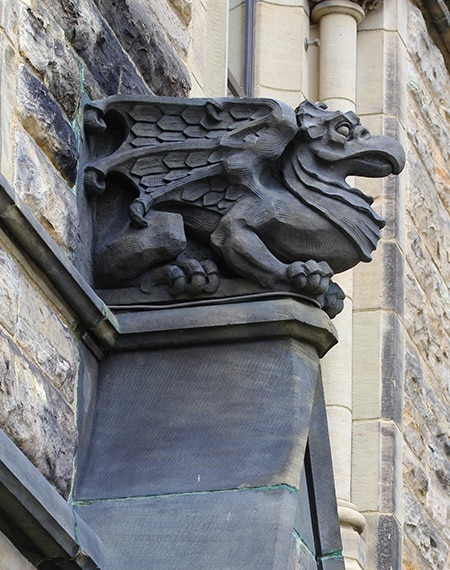Special Awareness Days
May 18th - National Museum Day
The following list includes examples of Canadian museums that house a wealth of information that will tie in with the activity bursts below.

Ready to Order?
If you are ready to order, please contact Customer Service:
Telephone: 1 (800) 361-6128 Fax: 1 (800) 563-9196
Introduction
Museums are a great way to learn about our history and to explore the amazing inventions that have been created to make our lives easier and more interesting. Whether we explore our world through constructed displays, videos, or hands-on experiences, museums are a wonderful way to learn, to create, and to explore.
The International Council of Museums (ICOM), created in 1946, is a worldwide organisation of museums and museum professionals. This organization has over 37,000 members in 141 countries and is dedicated to “promoting and protecting natural and cultural heritage, present and future, tangible and intangible.” Every year since 1977, ICOM has declared a day around May 18th as International Museum Day. Their purpose was to convey the message that “Museums are an important means of cultural exchange, enrichment of cultures and development of mutual understanding, cooperation and peace among peoples.”
There are so many wonderful museums across Canada. Try arranging a a real visit or a virtual field trip with your students. You can explore museums in so many ways that provide content across the curriculum in history, geography, science, and the arts. For this set of activity bursts, we are concentrating on Visual Arts.
Activity Bursts
Grades K-2
Visual Art, Music
Gather students and ask:
- Have any of you ever been to a museum? Share experiences.
Explain that museums are a wonderful way to find out how people lived before us, how they live now and how they might live in the future! They present information in the form of displays, dioramas, interactive games and activities, videos and so many other ways! Museums can also show you the creative works of crafts people, artists and musicians. Sometimes art museums are called galleries. Ask students if they have ever been to an art gallery.
Tell students that they are going to create an art gallery in their classroom, or online.
Invite the students to use a variety of mediums (markers, crayons, paint, construction paper etc.). Select some of your favourite music that will inspire some creativity from your students. Consider a wide variety of genres of music, from classical to pop, reggae, jazz, country, folk, rock, and more. Try more than one genre and see how the music impacts the art.
While listening to the music, students create an artistic masterpiece that they think matches the way they feel when they hear that music.

When students have finished, ask:
- Did you enjoy this activity? Why?
- Do you think the music helped you to create your masterpiece? How?
- What words would you use to describe your feelings during this activity?
- Did you enjoy the music or the art part of this lesson the most? Why?
Encourage students to look at the art around their homes and in their communities and try to decide what the artists were feeling when they created these pieces.
Post the class-made masterpieces.
For more great ideas on drawing to music, check out: https://www.pinterest.ca/pin/149674387592568671/
Grades 3-5
Art, Cultural Appreciation, Social Studies
Note: Students will need paper (white and other colours), scissors, glue, paints and brushes and a variety of other materials such as pieces of cardboard, felt, ribbon, buttons, etc.
Ask students if they have ever been to an art gallery. Explain that Canada has so many talented artists that share their work with us in galleries, museums, public buildings and our homes. Point out that artists can be people who perform as actors, dancers, musicians, writers, and other types of creators.
Explain that today they are going to focus on the type of artists who paint. These people are called visual artists. Ask students if they can name any Canadian artists. Share the names of some of the following famous Canadian painters: Tom Thompson, Emily Carr, Jean-Paul Riopelle, A.Y. Jackson, Alex Colville —so many wonderful Canadian artists from all walks of life!
Explain that one of Canada’s famous artists was a woman named Maud Lewis. Maud was born in Yarmouth Nova Scotia in 1903. She was plagued with arthritis that affected her hands, arms and shoulders, and at times made life very difficult. But Maud didn’t let that stop her from creating as much beautiful art as she could.
To learn more about Maud and see some of her paintings, try these websites:
https://oenogallery.com/artists/maud-lewis/
https://www.thecanadianencyclopedia.ca/en/article/paying-tribute-to-painter-maud-lewis
https://themusekenora.ca/exhibit/maudlewis/
Invite students to create a work of art that will showcase something that is important or meaningful to them. They will use Maud Lewis’ technique to paint a picture. Explain how Maud used bright colours and a “layering” technique

Here are the steps:
- Decide on a simple theme that you would like to paint. Do you like sliding? Skating? Animals? Mountains? etc.
- Paint the background: sky and clouds, water (if you wish) and land. Let it dry.
- Meanwhile, use various other materials to cut out the object(s) that will be the focus of your painting. (See for example, Maud’s cat paintings at: https://shop.artgalleryofnovascotia.ca/products/maud-lewis-matted-print
- Also cut out other things you want to add to your art: trees, flowers, sun, clouds, buildings, people, animals, etc. Colour or paint these items. Remember- Maud loved bright colours!
- Once the background is dry, glue the focus object(s) on the background and then glue on the other pieces.
- Feel free to add anything else that you think might be missing.
- Share the work with the class.
Debrief the activity by asking:
- What did you like about this activity?
- What do you like about Maud Lewis’ painting?
Close by reminding students that art can be a wonderful way to express your feelings and enjoy the world around you, even if it isn’t always easy!
Grades 6-8
History, Art, Critical Thinking
Ask students if they have ever been to a museum. Share responses, asking for clarification about type of museum, the location, theme, etc.
Explain that museums are a wonderful way to learn about history, people, inventions, science and nature. Tell students that today, they are going to do an activity related to a unique type of museum called an art gallery.
Share any information or experiences they may have had in an art gallery.
Explain that Canada has many visual artists, each with their own individual style. They may use charcoal, acrylics, water colours, oils or a combination of many different mediums. They may be painters or sculptors or print-makers. They sometimes have a theme that is seen throughout their work. It might be nature, or movement, or history or personal experience—anything that interests them. Artists may also create abstract work, meaning works that express the artist’s feelings or emotions, using shapes, forms, colours, and textures.
Share samples of Canadian abstract art (e.g., try an online image search with the keywords “Canadian abstract art”).
Challenge students to create their own abstract artwork. Invite them to use paper, art supplies, and other materials such as string, pieces of fabric, twigs, glue, ribbon, etc.
When they have finished, ask each student to name their artwork and to explain what emotions, thoughts or feelings it was intended to convey to the viewer.
Ask:
- What did you like/dis like about this activity? Why?
- Is abstract art something that you would enjoy seeing in an art gallery near you? Explain why or why not.
Close by reminding students that there are many forms of visual arts and that it is interesting to learn about the different types before visiting an art gallery so that you can appreciate each style.
You may also find it helpful to view online video tutorials on various abstract art techniques suitable for young people. For example:
https://www.youtube.com/watch?v=3hgK1MR_nxU
https://www.youtube.com/watch?time_continue=236&v=aZqP92VQV-I






